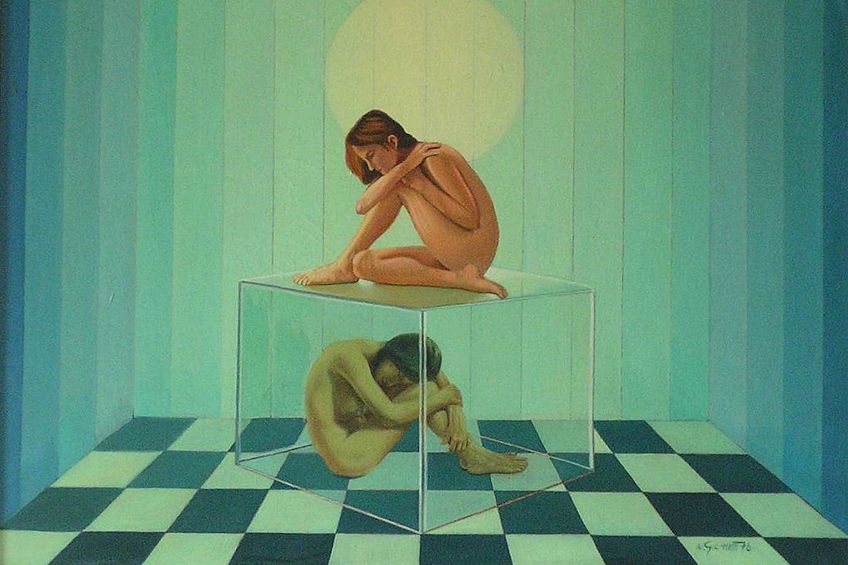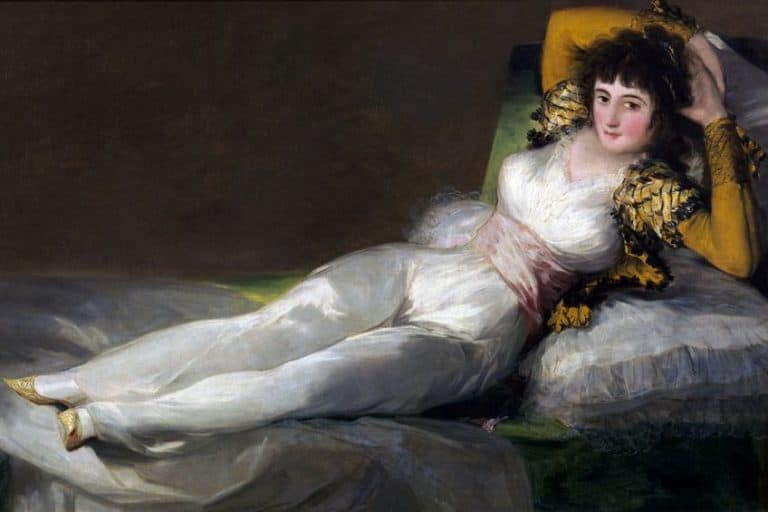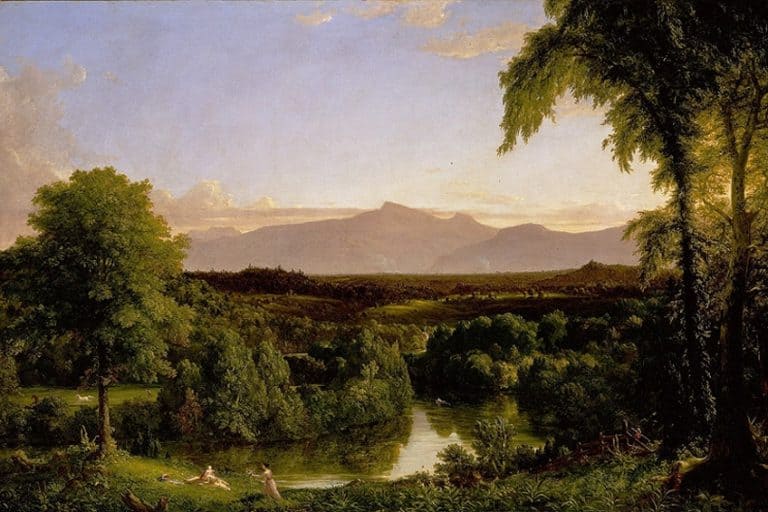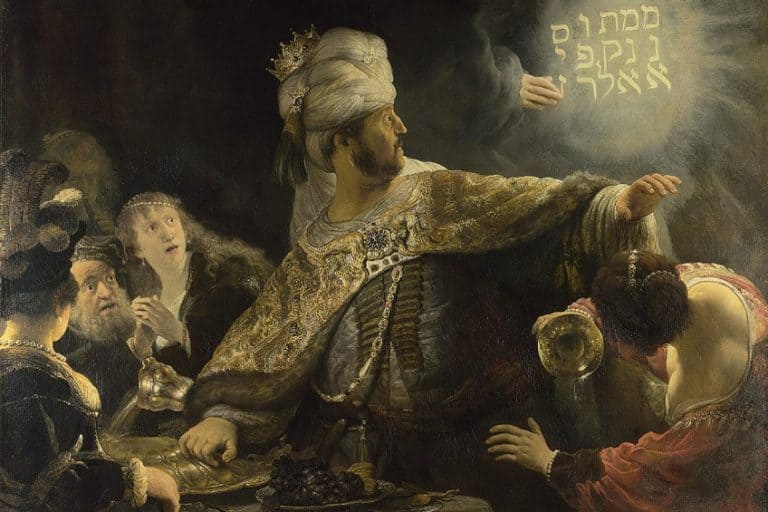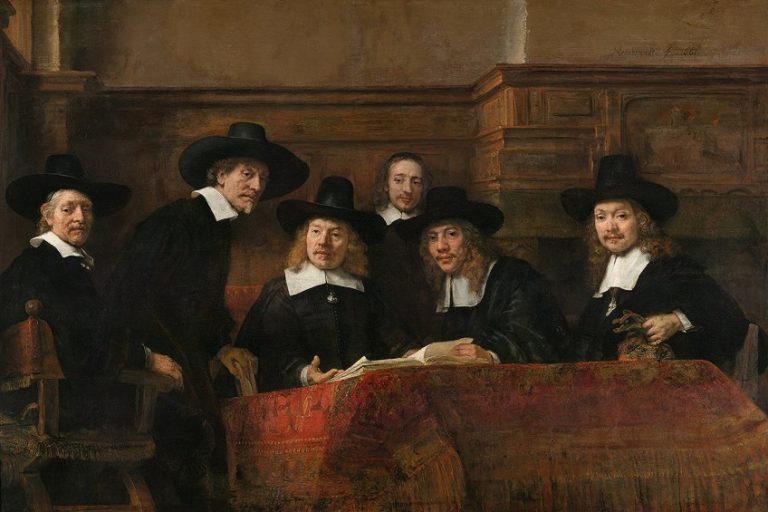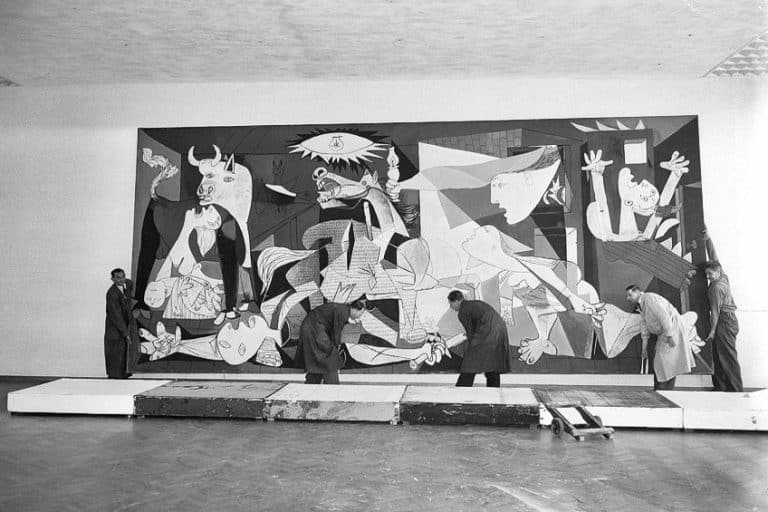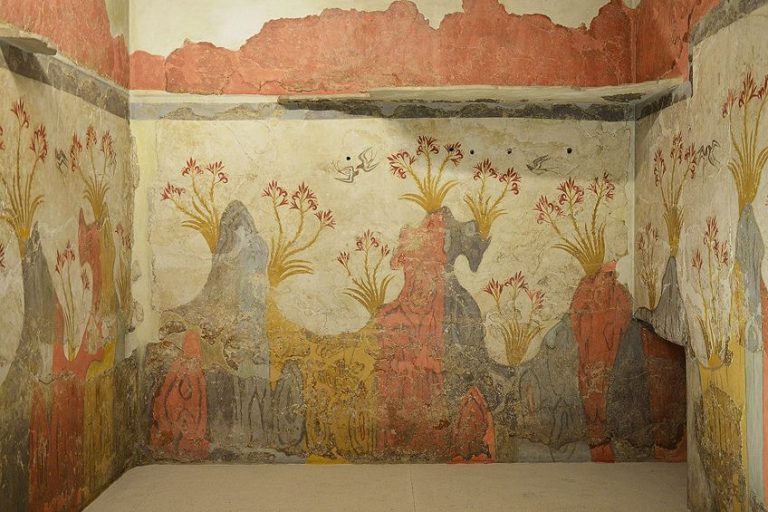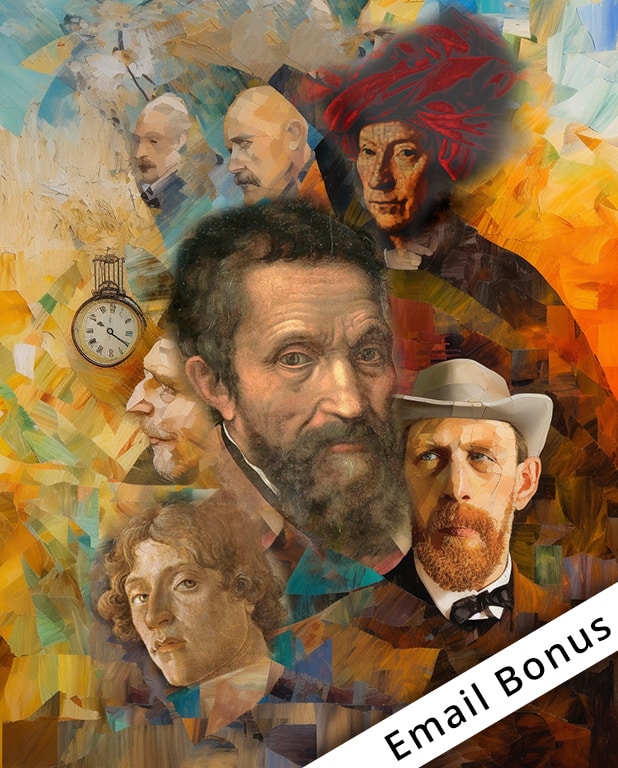Surrealist Paintings – 13 Famous Surrealism Paintings to Know
The Surrealism movement emerged in Europe during the aftermath of World War I, which saw many artists explore alternative methods of representation. Heavily influenced by the Dada movement, Surrealism was best-known for its focus on the subconscious mind, notions of irrationality, and the value of dream interpretation, which inspired a variety of writers and artists to delve deeper into the truth of the perceived human experience. In this article, we will introduce you to the most famous Surrealism paintings of all time that have shaped the movement’s visual landscape and provided us with some of the world’s finest 20th-century masterpieces. Keep reading for more about these unique paintings!
An Introduction to Surrealist Art
The Surrealist movement was founded by the French poet André Breton in 1924 in Paris and existed as an artistic and literary movement. Breton’s Surrealist Manifesto, published in the same year, marked the introduction of Surrealism to the 20th-century art world, which led to the movement’s rapid development in the aftermath of the First World War.
Due to the trauma and atrocities of World War I, many artists wanted to create a new kind of reality through art. Such artists attempted to understand the type of world that enabled the horrors of war to take place through the absurd and strange depictions included in their artworks.
Surrealism, therefore, encouraged the use of dreams and the subconscious mind in the production of art, which allowed artists to focus on the depths of their true feelings.
A movement rooted in psychoanalysis, Surrealism was greatly influenced by the work of Sigmund Freud, who Breton had intensively studied. Surrealism drew inspiration from the previous Dada movement, as well as the inclusion of avant-garde ideas into art, as it extended these notions across the fields of music, theatre, philosophy, and visual art.
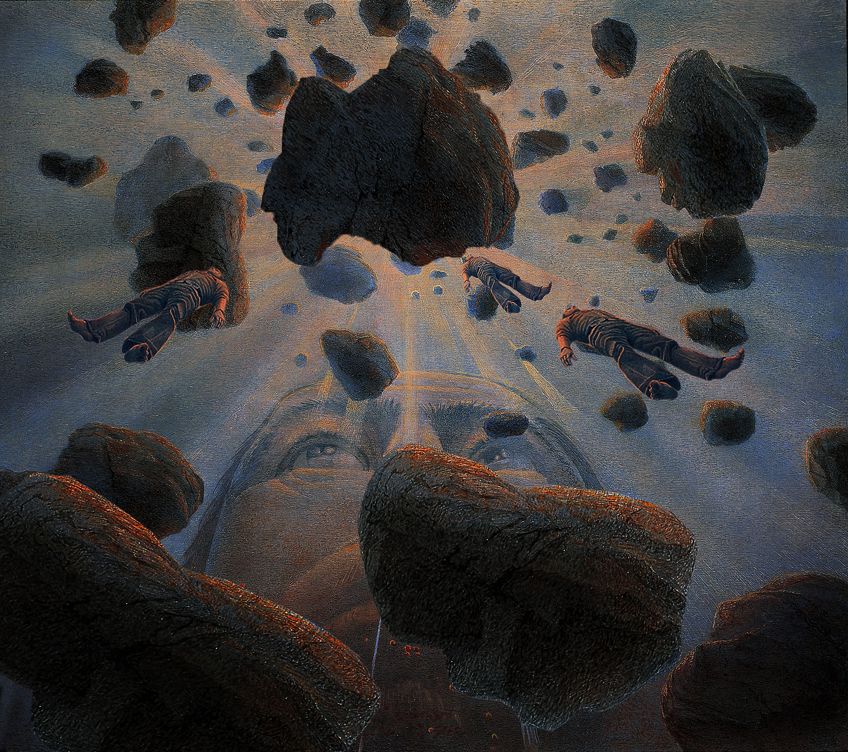
Often seen as both a cultural shift and a radical art movement, Surrealism focused on the concept of disorder, the element of surprise, surprising juxtapositions, and illogical depictions of reality. Artists chose to shift away from reason and logic, and hoped to achieve a more free approach to creation, such that art-making was driven by the unconscious human experience.
Automatism was a key concept within the Surrealist movement, which described a practice of making that relied on the artist’s ability to release control over the outcome of their work and enabled them to produce works that focused on their unconscious thoughts. These type of paintings explored the relationships between dreams and reality, and emphasized the importance of the human subconscious experience.
The artworks within this movement demonstrated a substantial move away from traditional forms of art, as artists sought to reveal psychological truth. This led to abstract images being created in order to represent the isolation that society was experiencing in the aftermath of a war-stricken world.
The 13 Most Famous Surreal Art Pieces
The Surrealist movement produced many artworks that accurately captured the ideas, aims, and characteristics of the movement. From legends like Salvador Dalí to mystical icons such as Leonora Carrington, you can expect to learn more about the top 13 Surrealist paintings discussed below!
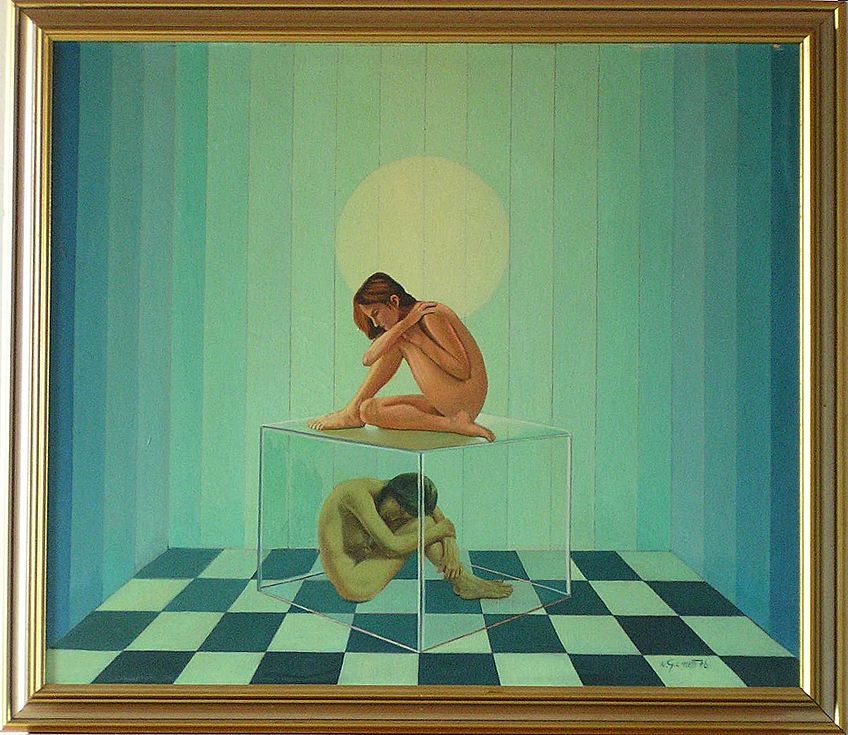
The Song of Love (1914) by Giorgio de Chirico
| Artist | Giorgio de Chirico (1888 – 1978) |
| Date | 1914 |
| Medium | Oil on canvas |
| Dimensions (cm) | 79 x 59 |
| Where It Is Housed | The Museum of Modern Art, New York City, United States |
This famous Surrealist painting was created by metaphysical painter Gorgio de Chirico in 1914 and is also recognized as Le chant d’amour. The painting is recognized as one of the earliest styles of Surrealism and was created 10 years before the founding of Surrealism, which was only established around 1924.
The painting was originally created as an iconic work of the metaphysical movement founded by Gorgio de Chirico and Carlo Carrà.
In The Song of Love, Chirico explores the bust of a classical sculpture coupled in a Surrealist composition with a rubber glove and a rubber ball positioned in between a few buildings and a train passing by in the distant background. The painting is thought to represent Gorgio de Chirico’s experience of past landscapes and his passion for the dying art styles found in Classical Greek sculpture.
The Harlequin’s Carnival (1924 – 1925) by Joan Miró
| Artist | Joan Miró (1893 – 1983) |
| Date | 1924 – 1925 |
| Medium | Oil on canvas |
| Dimensions (cm) | 66 x 90.5 |
| Where It Is Housed | Albright-Knox Art Gallery, Buffalo, New York City, United States |
Existing as one of the most outstanding Surrealist paintings of Spanish artist Joan Miró, as well as his most well-known piece, was this 1925 artwork titled The Harlequin’s Carnival (Carnaval de Arlequín). The title makes reference to two significant words in society at the time. These include the term “harlequin”, which referred to the Italian comic theatre character, who was always depicted wearing a checkered costume. Another term was “carnival”, which referred to a celebration.

Within The Harlequin’s Carnival, a boisterous celebration of life is depicted, as demonstrated by the shapes that are seemingly drifting and bouncing around. The celebration has also been speculated to emulate the Mardi Gras feast, whereby Christians indulged in fatty foods before abstaining from eating animal products until Easter. An overflow of information is presented by these cartoonish and biomorphic shapes that Miró scattered around, which overwhelms and confronts the viewer.
Despite the elusive meaning of the celebration, the painting reflects a seemingly random and chaotic scene, which mirrors Miró’s subconscious thoughts.
The Harlequin, who was positioned to the left of the painting, was portrayed with an elongated white body and a blue-red ball for a head. The figure appears to be overcome with sadness and is depicted with a puncture in his stomach, which was thought to signify Miró’s experience with poverty and hunger. As a struggling artist, Miró could barely afford to buy food at times and would describe coming home at the end of the day without food, and in a state of trance. It was in this hallucinatory state that Miró began to draw abstract forms, such as those seen in The Harlequin’s Carnival.
On the left of the painting, a long ladder is depicted leaning against a wall, which was a motif that Miró would later use in a number of his Surreal paintings. The ladder became an important symbol representing Miró’s fear of becoming trapped and was a tool that offered him an opportunity to escape. Additionally, the black triangle in the window is speculated to represent the Eiffel Tower, which emphasized Miró’s dream to conquer the world with his art and escape poverty.
What made The Harlequin’s Carnival so unique is that the forms depicted were produced from the hunger Miró felt when he went into a trance-like state, as opposed to images inspired by dreams, which were seen in the works of other Surrealist artists. The Harlequin’s Carnival remains a significant example of Surrealism painting, as Miró pioneered the use of anthropomorphic forms in the movement.
Battle of Fishes (1926) by André Masson
| Artist | André Masson (1896 – 1987) |
| Date | 1926 |
| Medium | Sand, gesso, oil, pencil, and charcoal on canvas |
| Dimensions (cm) | 36.2 x 73 |
| Where It Is Housed | The Museum of Modern Art, New York City, United States |
French artist André Masson enthusiastically practiced automatic drawing within some of his Surrealism artworks and frequently experimented with altered states of consciousness. His most well-known painting from the Surrealism movement was his 1926 artwork titled Battle of Fishes.
Within this artwork, Masson managed to create a powerful allegoric view of the human condition and the never-ending conflicts that were experienced due to the destruction left by World War I. Through the depiction of a surreal underwater landscape, Masson drew sharp-toothed fish brutally attacking each other in an attempt to demonstrate his thoughts about the current society in the wake of the war.
Whilst engaging with the entire canvas when creating Battle of Fishes, Masson managed to maintain a closed composition that closely resembled the closed-off nature of the depths of the ocean. Masson also expertly placed the energetic and fluid lines within his work, which provided some direction through the work and acted as guiding points for viewers to focus on. These strokes appear to be very solid and sure of their place, which demonstrated the confidence that Masson had in the style he was attempting to portray.
What made this Surreal artwork so fascinating was the unusual method that Masson applied, as his striking approach to art-making enabled the element of chance to enter his works.
Within Battle of Fishes, Masson incorporated sand and generously applied gesso to the canvas to create a structure for the rest of the piece to stand on. While the areas of sand became prominent focal points, the color palette Masson used helped emphasize other areas within the composition. Masson’s use of cool tones pulls the viewer into a grim scene, while the warm tones make for a striking contrast. These distinct colors, in addition to the organic shapes that Masson used, helped maintain the flow and rhythm of the painting. Masson’s deep-toned blues and greens also generate a sense of melancholy, which mirrored the reality of the time. The symbolism embedded in the painting was incredibly relevant to the time considering the aftermath of the war. Masson’s use of fish were said to represent the distraught and torn-apart communities that were left to rebuild their homes. Some fish are also depicted lifeless, which symbolized those who lost their lives in the war.
“Battle of Fishes” was a profound painting that demonstrated Masson’s ability to access his unconscious mind and create an irrational composition that accurately captured the chaos felt in society after the First World War.
The Great Masturbator (1929) by Salvador Dalí
| Artist | Salvador Dalí (1904 – 1989) |
| Date | 1929 |
| Medium | Oil on canvas |
| Dimensions (cm) | 110 x 150 |
| Where It is Housed | Museo Nacional Centro de Arte Reina Sofia, Madrid, Spain |
One of the most well-known members of Surrealism was Spanish artist Salvador Dalí, who went on to paint some of the most iconic works that helped define the movement. One of Dalí’s earliest Surrealist paintings, painted in 1929, was The Great Masturbator.
At the time that Dalí painted The Great Masturbator, he expressed a great fascination with Sigmund Freud’s psychoanalytic theory and was interested in examining the unconscious aspects of self, including sexually repressed mechanisms and the ego’s structure. The Great Masturbator was thus a self-portrait of Dalí’s own sexual obsessions and his overgrown ego, which he acknowledged many times throughout his career.
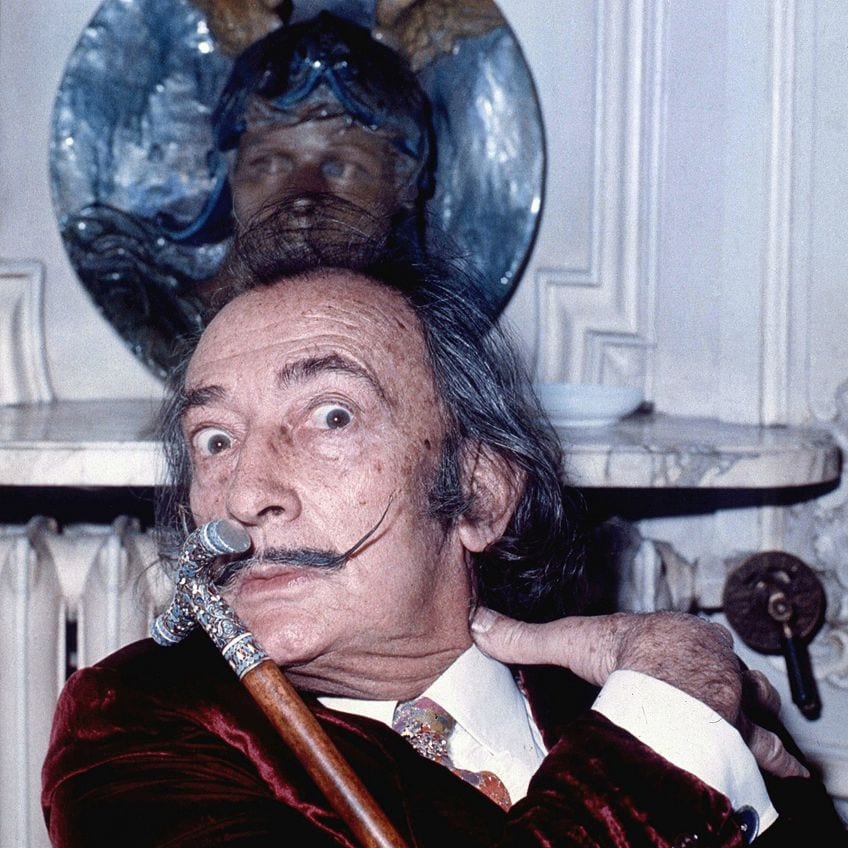
Set in an incredibly surreal landscape, Dalí painted this dreamlike scene after spending a few days with his future wife, Gala. Several other objects of desire were included within this artwork, such as references to Gala and a desert oasis. Dalí also included a few faceless figures and insects, which represented his paranoia. The painting reflects a psychic snapshot of Dalí’s subconscious, with the large distorted head dominating the painting as a personification of Dalí himself.
The head, only seen in profile, reflected the spiritual and erotic change that Dalí experienced due to Gala’s sudden presence in his life.
Seen as a disturbing self-portrait, The Great Masturbator demonstrated an imagination that was at its peak. This was demonstrated by the bizarre illustration of a grasshopper that appears leeching off a rock, which was slowly morphing into Dalí himself. The rock formation is said to represent a similar rock structure at Cullero in Cap de Creus, Spain, and was later referenced in many of Dalí’s paintings. This demonstrated Dalí’s obsessive nature and the rock soon became the most captivating and omnipresent object within many of his Surrealism artworks.
The Treachery of Images (1929) by René Magritte
| Artist | René Magritte (1898 – 1967) |
| Date | 1929 |
| Medium | Oil on canvas |
| Dimensions (cm) | 60.3 x 81.1 |
| Where It Is Housed | Los Angeles County Museum of Art, Los Angeles, United States |
Another significant figure who helped propel the Surrealist movement was the Belgian artist, René Magritte. His explorations within Surrealism were strongly influenced by the post-war atmosphere that gripped society, structuralist language theories, and the gap that existed between language and meaning. One of Magritte’s most well-known works, painted in 1929, was The Treachery of Images.
Within this painting, a simple image of a pipe is shown, along with a French statement “Ceci n’est pas une pipe”, which translates to “This is not a pipe.” The contrast created by Magritte demonstrated his idea of the inconsistency between language and meaning and was highlighted by the distinction between signifier and the signified object.
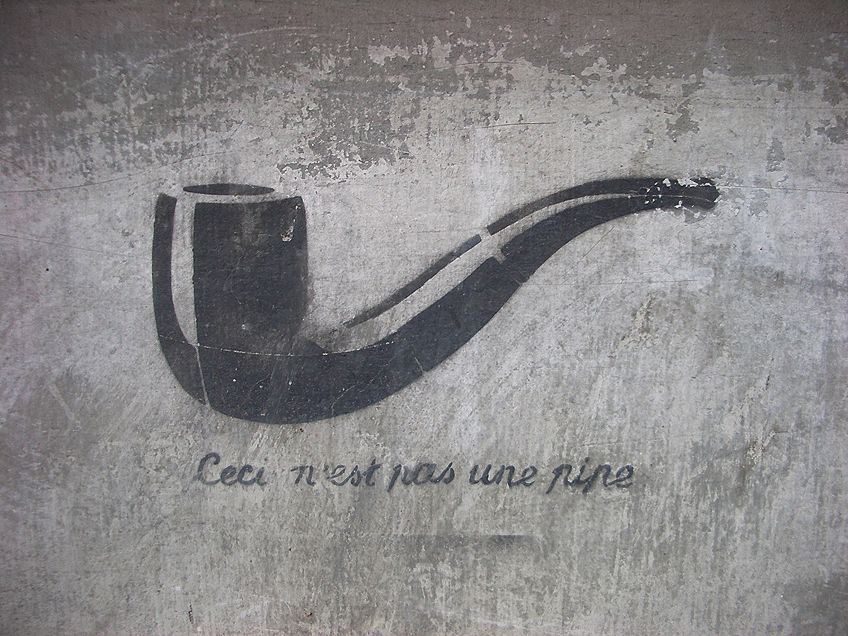
This humorous painting depicted the discord that was apparent between language and meaning in post-World War I society. Magritte stated that “words no longer represented what they truly meant” and due to the disharmony from of the war, Surrealists were free to explore the deconstruction of language.
The Treachery of Images highlighted Magritte’s belief that art was not reality, but a simple representation of it.
Thus, the statement within this artwork rang true since it was not a pipe that viewers were looking at but rather a representation of the real object. In doing so, Magritte created a three-way paradox from the traditional notion that objects were supposed to align with their uses for words and images. Like many artists within the Surrealist movement, Magritte sought to overturn the presence of rationalization and logic within art.
Surrealism enabled Magritte to remove the original meaning of signs and symbols, which inspired many artists to do the same. Additionally, Magritte’s work was seen as an influential starting point for Conceptual art. The tension that Magritte created between truth and fiction, as well as reality and Surrealism, was expertly displayed within his works. This allowed The Treachery of Images, along with his other Surreal paintings, to become some of the most iconic Surrealist artworks to ever exist.
The Persistence of Memory (1931) by Salvador Dalí
| Artist | Salvador Domingo Felipe Jacinto Dalí i Domènech (1904 – 1989) |
| Date | 1931 |
| Medium | Oil on canvas |
| Dimensions (cm) | 24 x 33 |
| Where It Is Housed | The Museum of Modern Art, New York City, United States |
Another significant artwork created by Salvador Dalí during the Surrealism movement was his 1931 painting, The Persistence of Memory. This artwork was undoubtedly one of the most famous Surrealist paintings from the movement, which paid homage to the concept of time, as depicted by the melting clocks. These clocks were said to reflect the inner workings of Dalí’s subconscious mind, in addition to conveying both the simple yet complex message that time, as society perceived, was essentially meaningless.
Within this abstract and dreamlike scene, the dripping clocks are portrayed as the central motif, which was depicted against the golden cliffs of Catalonia, where Dalí was born. The inclusion of the giant nose, upon which a clock is melting, makes reference to Dalí’s previous painting, The Great Masturbator (1929).
Dalí demonstrated a great interest in the idea of subconscious art and would often create a self-induced hallucinatory state when painting.
This can be seen in certain objects that he included in his painting, as they seemed to come from deep within his psyche. An example of a seemingly abstract inclusion is the portrayal of ants in his work, which reoccurred within his later Surrealism paintings. The ants were thought to represent Dalí’s fascination with the concept of decay and the futility of attempting to hasten death.
The melting watches and the deformed face seem completely detached from reality, which demonstrates the depth of Dalí’s subconscious. When asked about the meaning of the clocks within the painting, Dalí frequently proclaimed that he had no idea, yet refused to associate the depiction of his clocks with the concept of time. In doing so, Dalí was able to render familiar objects in unfamiliar ways, which completely stripped them of any meaning that made sense.
This artwork existed as a very important painting for Dalí, as he constantly returned to this theme through the use of different styles, media, and variations in the other works he produced.
Its influence spread throughout the Surrealist movement, as Dalí was able to easily distort familiar objects to the point where they appeared to be part of an abstract and phantasmagoric world, which effortlessly captured the irrationality that Surrealism was all about.
Egg in the Church or the Snake (1932) by André Breton
| Artist | André Breton (1896 – 1966) |
| Date | 1932 |
| Medium | Collage on paper |
| Dimensions (cm) | Unavailable |
| Where It Is Housed | Unavailable |
Recognized as the founder of Surrealism, French writer and poet André Breton wrote the original Surrealism manifesto that went on to define the movement as an art practice. While he focused his efforts on writing within the Surrealism period, Breton did create one notable artwork in 1932, titled Egg in the Church or the Snake.
Since this was one of Breton’s only visual artworks, not much is known about the paper collage that he constructed. Although Egg in the Church or the Snake is a collage and not a painting, there is a reason that this artwork is included on the list of famous Surrealist paintings. This is because it essentially questioned the function of the author by broadening the media and pioneering the groundbreaking use of photomontage in order to make a visual experiment. Thus, the combination of these aspects created a cryptic and surreal dreamlike scene.
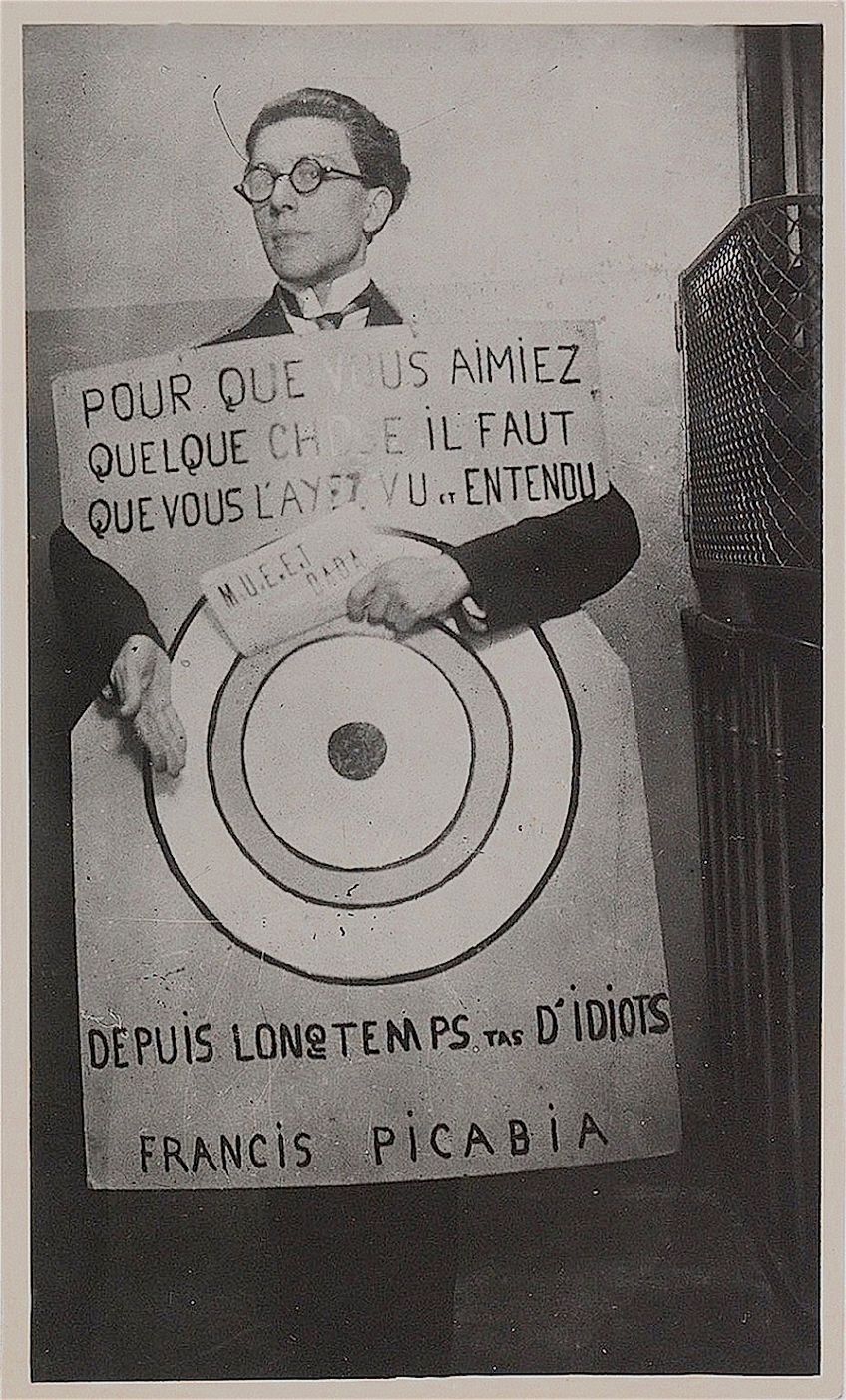
The title chosen by Breton was allegorical and enigmatic in its association with religion, and the subject matter, which exemplified the Surrealist interest in the female body and Christianity’s repression of sexual desire. Breton aspired to reduce all forms of sexual repression to mere symbols and create a language that would go on to provide a platform for expression.
Although Breton did not paint and draw as much as other Surrealist artists, his contribution to the movement was invaluable since his writings influenced the very core of Surrealism.
Observatory Time: The Lovers (1932 – 1934) by Man Ray
| Artist | Man Ray (1890 – 1976) |
| Date | 1932 – 1934 |
| Medium | Oil on canvas |
| Dimensions (cm) | 100 x 250.4 |
| Where It Is Housed | Private collection |
Observatory Time: The Lovers is one of the most well-known Surrealist paintings created by renowned Avant-Garde photographer and painter Man Ray. The painting, also recognized as A l’heure de l’observatoire, les Amoureux, was an example of Ray’s exploration of Dadaist and Surrealist styles and was originally a photograph depicting a nude woman in her bed, dreaming about her lover. At the base of the woman’s bed is a chessboard that represents the structure of life in its checkered, grid-like state. For Ray, the grid-like structure was the basis of all life and art, and was viewed as a way to understand the order of the world. The iconic lips in the painting was a reference to the postmodern Rocky Horror Picture Show logo.
The Barbarians (1937) by Max Ernst
| Artist | Max Ernst (1891 – 1976) |
| Date | 1937 |
| Medium | Oil on cardboard |
| Dimensions (cm) | 24.1 x 33 |
| Where It Is Housed | Metropolitan Museum of Art, New York City, United States |
Known as both an influential Dadaist and Surrealist, German artist Max Ernst was a prolific figure of Surealism who developed the technique known as “frottage”. Frottage involved the use of pencil rubbings derived from objects to create new images. Ernst’s most well-known artwork from the Surrealist movement was painted in 1937 and was titled The Barbarians.
Ernst’s painting was heavily influenced by Sigmund Freud’s theory of unconsciousness, with The Barbarians existing as an exploration of his subconscious mind, childhood memories, and interest in pagan, mythological, and sexual symbols. Ernst approached the concepts of barbarianism according to the Freudian concepts of personality, such as the ego, super-ego, and the id, and placed them as creatures in a surreal landscape.

Within The Barbarians, gigantic and malevolent-looking figures appear to take on the form of birds. The dark bird seems to be leading the way, while the other bird turns around to stare at a strange animal that is hanging on its arm. In the distance, a small woman is spotted, who appears to be holding onto an unidentified winged animal. Ernst often incorporated birds into his works, as he believed that they embodied some human elements.
The strange patterns drawn on the figure’s bodies were angular and rough, as they were said to evoke themes of rock and fossil formation. Ernst achieved this look by layering paint onto a piece of cardboard and pressing it against objects while it was wet to leave an imprint. He then touched up the figures with a brush, which scraped away the additional layers of paint. The hand of the dark bird, which was raised to the sky, represented how barbarians always believed that they were the island of Atlas keeping the heavens from falling. The other bird was said to be preparing to begin his military progression onto the land owned by humans.
Thus, “The Barbarians” represented Ernst’s belief that democracy had the ability to transform into barbarism, as shown by the onset of war.
Indefinite Divisibility (1942) by Yves Tanguy
| Artist | Yves Tanguy (1900 – 1955) |
| Date | 1942 |
| Medium | Oil on canvas |
| Dimensions (cm) | 101.6 x 89 |
| Where It Is Housed | Albert-Knox Art Gallery, Buffalo, New York City, United States |
French artist Yves Tanguy was an important influence within the Surrealism movement, as his artworks were made up of an unusual, instantly recognizable style of non-representational Surrealism. Possibly his most well-known work from that period, painted in 1942, was his painting titled Indefinite Divisibility. Within his artworks, Tanguy would make use of the concept of stream of consciousness, so that his Surreal paintings would active emotions within viewers as opposed to conveying specific explanations for the painting.
Tanguy was also influenced by the subconscious and dreams, with these elements appearing in different circumstances within the majority of his artworks.
Indefinite Divisibility depicted ordinary objects that were placed together to form the shape of a man, in addition to what appeared to be an artist’s easel. Tanguy borrowed a visual symbol from his mentor, as he created an obscure and mystifying structure that took over the indefinite space. Additionally, the form of the structure appeared to be indistinct and vague, which added to the mystery present within this painting.
Placed on what appears to be a beach or a cool-toned version of purgatory, Tanguy created a juxtaposition between the forms composed of multiple objects. This was done to evoke feelings of uncertainty within the work, as viewers were unable to discern what the world he created was really comprised of. In doing so, Tanguy brought up a significant philosophical debate, as he wondered if human forms and objects created by man were the same or simply imagined.
In Indefinite Divisibility, dreams and realities merge through the conflicting shapes that confront the viewer and demand attention. What makes this artwork an influential Surrealist piece is that Tanguy focused on expressing and triggering sensations rather than explaining what his painting meant.
In 1950, the Psychological Institution of Vienna exhibited Tanguy’s paintings alongside those made by schizophrenic patients to see if the public could differentiate between the two. When they could not, Surrealists concluded that abstraction within their works truly held no resemblance to reality.
I Saw Three Cities (1944) by Kay Sage
| Artist | Kay Sage (1898 – 1963) |
| Date | 1944 |
| Medium | Oil on canvas |
| Dimensions (cm) | 92 x 71 |
| Where It Is Housed | Princeton University Art Museum, New Jersey, United States |
American artist Kay Sage, who was the wife of fellow artist Yves Tanguy, was one of the few female artists within Surrealism, who was incredibly influential to the movement. Her most significant artwork painted in 1944 was I Saw Three Cities.
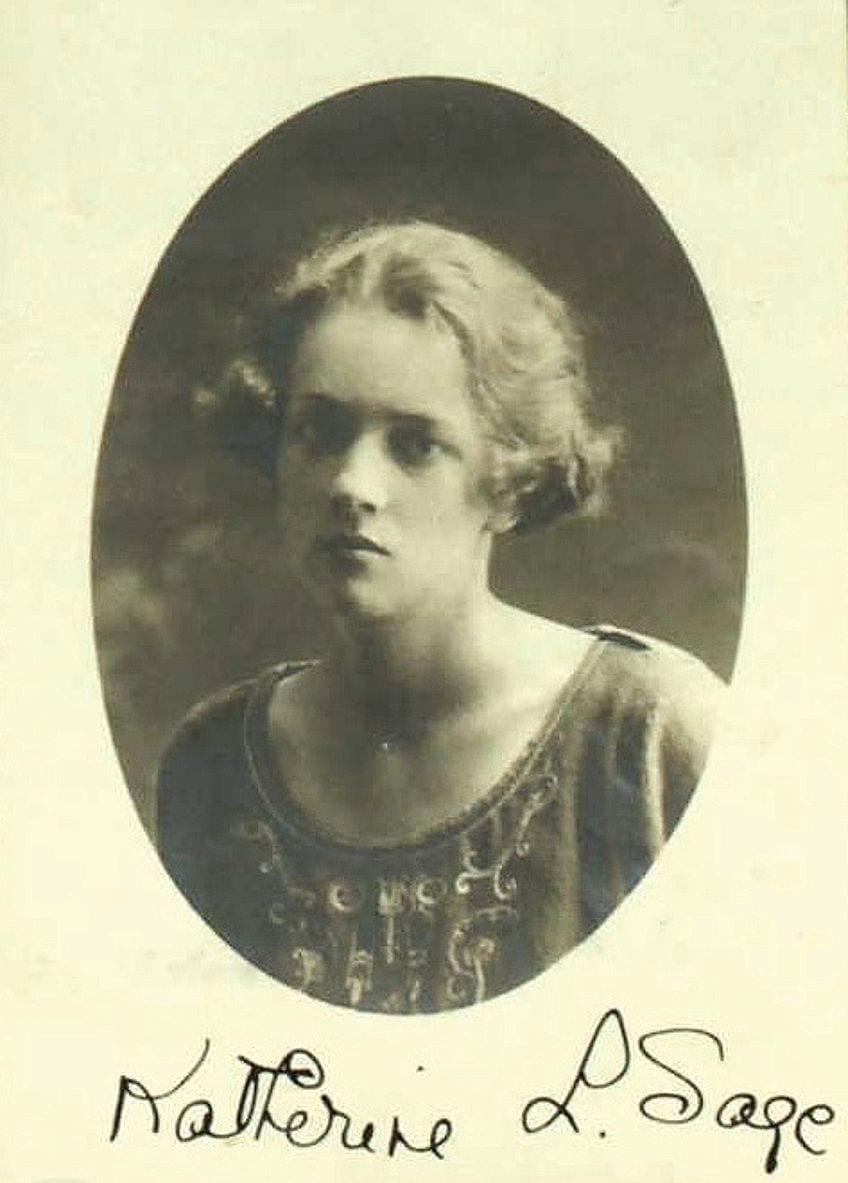
Sage’s work differed greatly from the other women within Surrealism. The universes she created in her paintings were unclear, impenetrable, and nihilistic. Within I Saw Three Cities, Sage portrayed an eerie atmosphere, which gave the artwork a haunting and ghostly feel. She also contrasted the fluidness of drapery, which she incorporated in reference to Ancient Greek aesthetic, with sharp geometric shapes, which created a tension between modernity and classical art in her painting.
The desolate landscape is seemingly controlled by a tall, concealed human-looking figure that stands in the foreground of the work and remains unknown. The swirling drapery, which was incredibly well-rendered, seems out of place in this abstract and abandoned setting, with the juxtaposition developed by Sage creating a disorienting effect. The colors used by Sage are muted and foreboding since is forced to recognize that something sinister might occur in this gloomy and miserable landscape.
Painted towards the end of World War II, one cannot help but wonder if Sage’s painting was a depiction of the misery and devastation that she witnessed in society. The title suggested that the painting was created as a form of mourning for the cities that were destroyed during the war.
The Son of Man (1964) by René Magritte
| Artist | René Magritte (1898 – 1967) |
| Date | 1964 |
| Medium | Oil on canvas |
| Dimensions (cm) | 116 x 89 |
| Where It Is Housed | Private collection |
Another significant painting by René Magritte towards the end of the Surrealism period was his 1964 artwork titled The Son of Man. Between this painting and his 1929 The Treachery of Images, it has been said that The Son of Man exists as the more prominent artwork, as well as one of the most iconic Surrealist paintings of all time.
Consisting of a man dressed in an overcoat and a bowler hat, The Son of Man was painted as a self-portrait of Magritte, who attempted to convey important messages about the individual. Magritte covered his face with the green apple that is floating in the air, which commented on the unpredictable relationship between the visible and the hidden, as well as the conscience and subconscious in human personality.

By Magritte obscuring his face from the public, he remarked on the human desire to constantly see what is hidden behind the visible. This was demonstrated through his eyes, which can be seen peeking through the leaves of the apple. This leaves viewers both curious and annoyed as they cannot see the face, leaving them to have to imagine how Magritte depicted himself. Additionally, the bits of his eyes that can be seen above the apple created a slightly unsettling feeling of being watched.
The title of the painting was also thought to refer to Jesus, which aided in the creation of suspense and tension within the artwork. This religious implication is also seen through the inclusion of the apple, as some art critics have considered it to represent Christian beliefs about Adam’s temptation in the Garden of Eden and the destruction of mankind.
However, what makes The Son of Man so interesting is that despite the painting existing as a self-portrait of Magritte, it can essentially refer to anyone, as represented by the faceless figure depicted. Thus, The Son of Man exists as an influential artwork towards the end of Surrealism, as the bright and slightly extreme colors used by Magritte inspired the start of Abstract Expressionism and post-Modernism.
Figuras Fantásticas a Caballo (1952) by Leonora Carrington
| Artist | Mary Leonora Carrington (1917 – 2011) |
| Date | 2011 |
| Medium | Tempera on canvas |
| Dimensions (cm) | 30.5 x 72.4 |
| Where It Is Housed | Private collection |
Figuras Fantásticas a Caballo is among the most famous Surrealist artworks by Leonora Carrington, who was also a renowned British novelist and painter. Carrington was recognized as one of the last Surrealist painters of the 1930s, who continued to produce paintings well into the 21st century.
The mystic quality of Carrington’s work was traced back to her early childhood experiences with visions, ghosts, and animals, which informed many of her later works.
Figuras Fantásticas a Caballo offers one insight into the fantastical world of Carrington’s imagination, fueled by her experiences in New Mexico and her mysterious anthropomorphic characters, which possess a unique and magical visual quality. Although she rejected the label “Surrealist”, Carrington’s work remains a significant contribution to the Surrealist movement of the 1930s.
While we have only covered the top 13 most famous Surrealist paintings of all time, there are many other well-known and influential paintings from the movement that have held a significant impact on the development of other art movements. Surrealism and its impact on the evolution of Modern art and Abstract Expressionism remains a pivotal point of discussion for many scholars who admire the uniqueness of the movement.
Take a look at our Surreal paintings webstory here!
Frequently Asked Questions
What Is Surrealism?
Surrealism in art history refers to the 20th century Avant-Garde art movement that emerged in the fields of visual art and literature as a result of prevailing interests in notions of the unconscious human mind. Surrealism describes a visual exploration of themes related to the subconscious mind, perception of reality, the irrational mind, and dreams.
Who Was the Most Popular Surrealist Painter?
Among the many iconic artists of the Surrealist movement was Salvador Dalí, who was considered to be the most popular Surrealists of the 20th century. Dalí’s unique paintings were inspired by the ideas of psychoanalyst Sigmund Freud and was most famous for his bizarre compositions, executed with the best technical painting skills anyone had seen in the 1930s.
What Were the Characteristics of 20th-Century Surrealist Paintings?
The characteristics of 20th-century Surrealist paintings included bizarre imagery, symbols, dream-like visual landscapes, personal iconographies, the use of automatism in production techniques, and distorted forms. At the forefront of Surrealist paintings was the use of illogical juxtapositions, often to evoke a sense of randomness, confusion, and presented a disruption of reality.
Isabella studied at the University of Cape Town in South Africa and graduated with a Bachelor of Arts majoring in English Literature & Language and Psychology. Throughout her undergraduate years, she took Art History as an additional subject and absolutely loved it. Building on from her art history knowledge that began in high school, art has always been a particular area of fascination for her. From learning about artworks previously unknown to her, or sharpening her existing understanding of specific works, the ability to continue learning within this interesting sphere excites her greatly.
Her focal points of interest in art history encompass profiling specific artists and art movements, as it is these areas where she is able to really dig deep into the rich narrative of the art world. Additionally, she particularly enjoys exploring the different artistic styles of the 20th century, as well as the important impact that female artists have had on the development of art history.
Learn more about Isabella Meyer and the Art in Context Team.
Cite this Article
Isabella, Meyer, “Surrealist Paintings – 13 Famous Surrealism Paintings to Know.” Art in Context. April 30, 2021. URL: https://artincontext.org/surrealist-paintings/
Meyer, I. (2021, 30 April). Surrealist Paintings – 13 Famous Surrealism Paintings to Know. Art in Context. https://artincontext.org/surrealist-paintings/
Meyer, Isabella. “Surrealist Paintings – 13 Famous Surrealism Paintings to Know.” Art in Context, April 30, 2021. https://artincontext.org/surrealist-paintings/.


